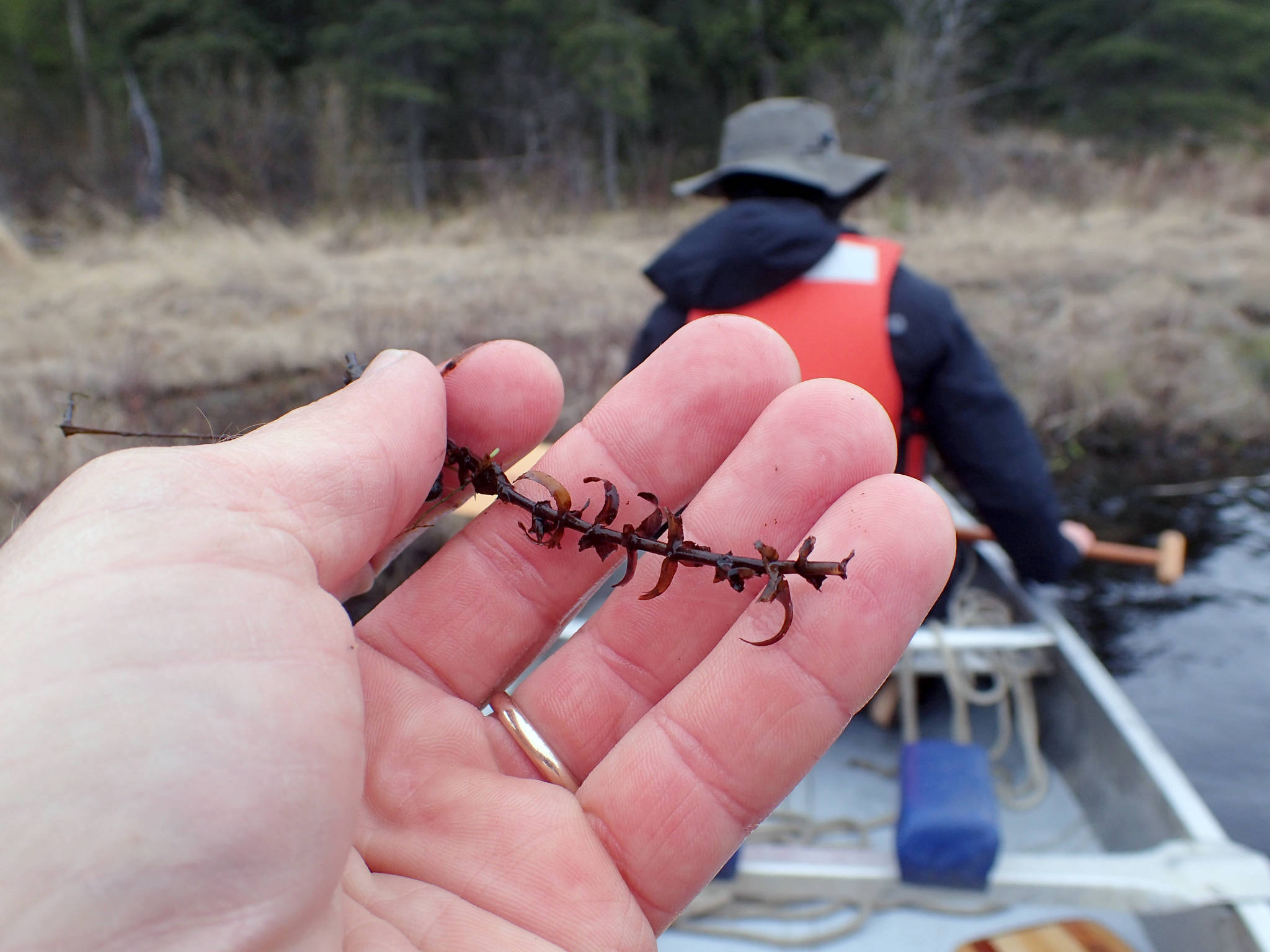The commercial harvest of the five salmon species in Alaska was worth $586 million to fishermen in 2018. More than half of those gross earnings are attributable to sockeye salmon, valued at $344 million.
I suspect most Alaskans, particularly commercial fishermen, would be alarmed if the value of their sockeye harvest was reduced by, say, half. That’s exactly what a 2019 article published in the Journal of Ocean and Coastal Economics says is likely if elodea, a freshwater invasive plant, successfully invaded all suitable water bodies in Alaska.
University of Alaska economists Dr. Toby Schwoerer and Dr. Joseph Little, together with fisheries scientist Dr. Milo Adkison, co-authored this paper that estimated average annual losses of $159 million to the commercial fishing industry as sockeye habitats, particularly spawning beds, are degraded. The magnitude of this potential loss is staggering.
In contrast, only $3.2 million was spent during 2010 to 2018 to combat this invasion in Alaska. Most of the funding to date has originated from the U.S. Fish and Wildlife Service, but other partners have contributed to fill the fiscal gap.
The Alaska Division of Agriculture is the lead state agency for elodea management, but the Alaska Department of Fish and Game supports efforts when it can. This year, even as the DOA plans herbicide treatments of Alexander and Sucker lakes, ADF&G closed both of these highly infested waterbodies to sportfishing for the summer to minimize the risk of spreading elodea by floatplane to other lakes in the Matanuska-Susitna Borough.
Although elodea was first found in Alaska in 1982 in Cordova, it wasn’t recognized as an invasive species until 2010 when it was rediscovered in Chena Slough, which flows into the Chena River above Fairbanks. Elodea was detected shortly thereafter in Anchorage (2011), the Kenai Peninsula (2012) and the Mat-Su (2014).
In Anchorage, the DOA has eradicated elodea from four lakes (including Lake Hood), continues to treat Little Survival Creek near Potter’s Marsh, and plans to treat Jewell Lake soon.
In the Interior, elodea is almost eradicated from Chena Slough by efforts of the Fairbanks Soil & Water Conservation District. However, it has since spread downstream to Totchaket Slough (where it’s being treated) and Manley Hot Springs Slough on the Tanana River. Elodea has also spread along the Richardson Highway eastward to Bathing Beauty Pond and Birch Lake, perhaps from Chena Lake, which also is infested.
Near Cordova, infested water bodies include Eyak, McKinley, Bering and Martin lakes. Multiple ponds and sloughs downstream of these larger lakes are infested, but the good news is that elodea is still contained to the Copper River Delta. The Forest Service is experimentally treating about 40 acres in the Eyak Cannery pond complex.
Here on the Kenai Peninsula, partners in our local Cooperative Weed Management Area were the first in Alaska to successfully eradicate elodea from a water body. We received a special appropriation of $40,000 in 2013 from the Kenai Peninsula Borough Mayor’s office to help with early efforts.
In 2014, we received $400,000 from the borough to support the eradication of elodea from the Kenai Peninsula through June 2019. We complemented this funding with grants from the National Fish and Wildlife Foundation, U.S. Fish and Wildlife Service and the Kenai Peninsula Fish Habitat Partnership.
Most of the borough funds were used to purchase herbicide (diquat, fluridone), but some went toward application equipment and the laboratory costs associated with monitoring fluridone concentrations in the water column; none was spent on salaries.
Not only did we successfully eradicate elodea from Beck, Daniels and Stormy lakes north of Nikiski by 2016, which is that for which we were initially funded, we also used funds to support the successful eradication of elodea from Sports Lake in Soldotna by 2018 and from Hilda-Seppu Lake in Nikiski by 2019.
In addition to partially funding the treatment, monitoring and successful eradication of these five infestations on the peninsula, funds from this grant were also used to purchase diquat for the initial treatment of elodea in Lake Hood in 2015. At this point, there are no water bodies known to be infested by Elodea on the Kenai Peninsula!
Elodea is the first submersed freshwater invasive plant to establish in Alaska and the first to threaten salmon, but it won’t be the last. How we respond now to elodea, successfully or otherwise, will set the path for addressing new invasions in the future.
Dr. John Morton is the supervisory biologist at Kenai National Wildlife Refuge. Find more Refuge Notebook articles (1999–present) at https://www.fws.gov/refuge/Kenai/community/refuge_notebook.html.

